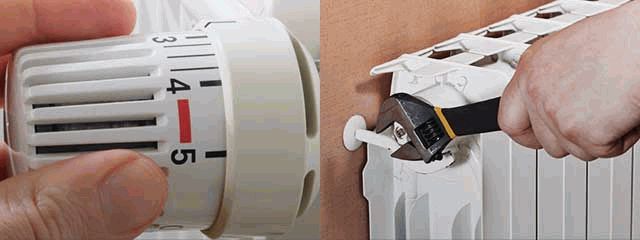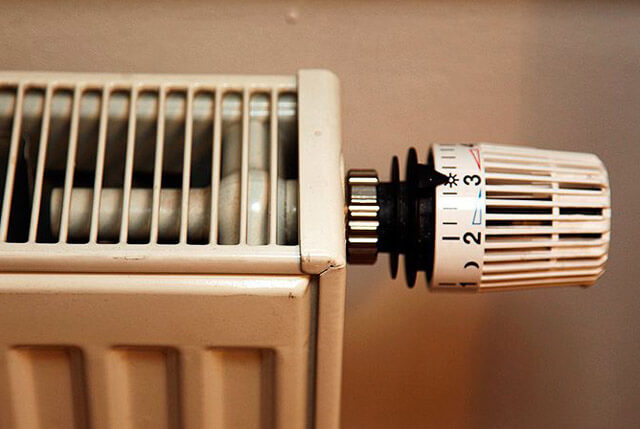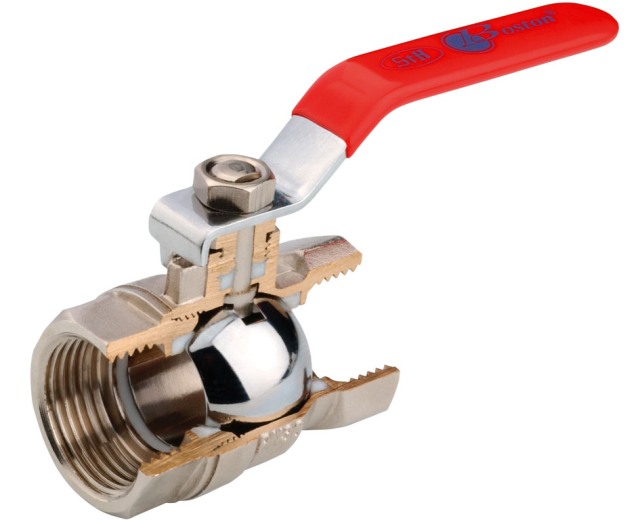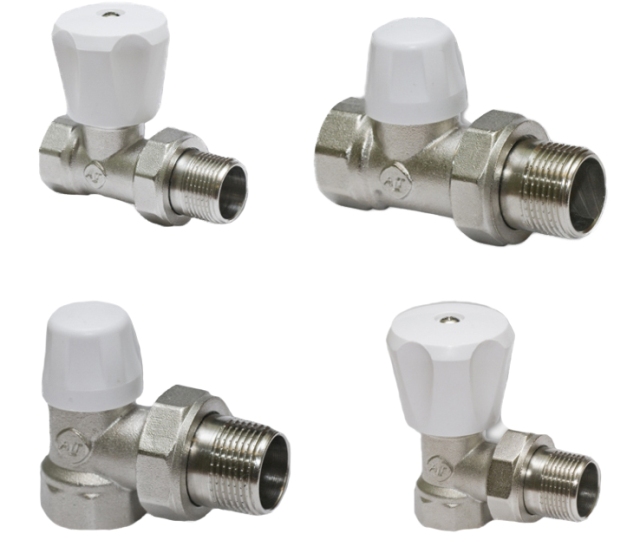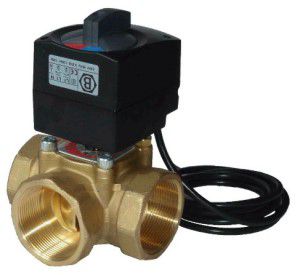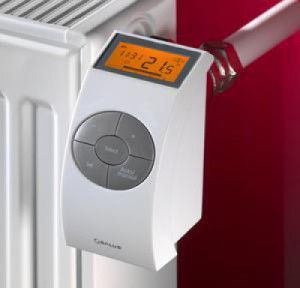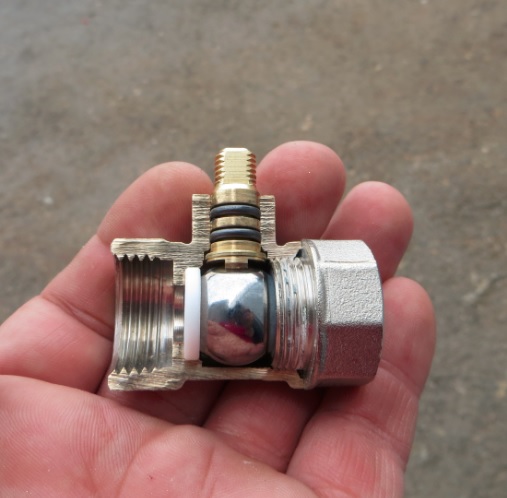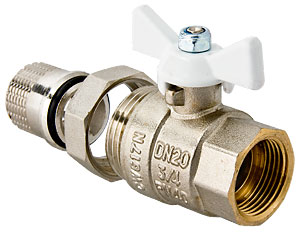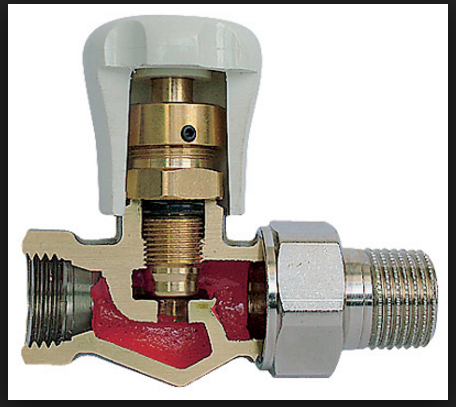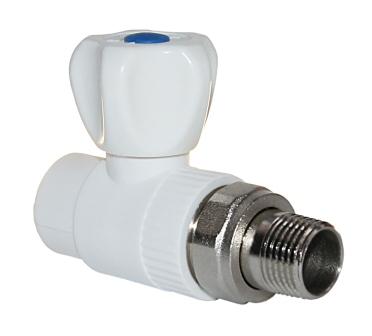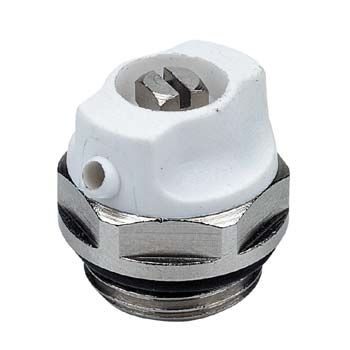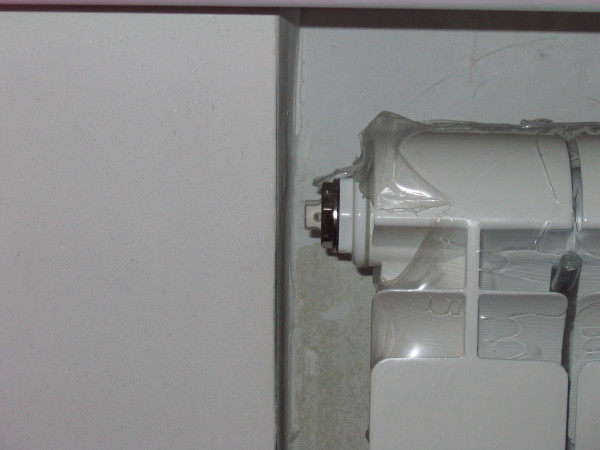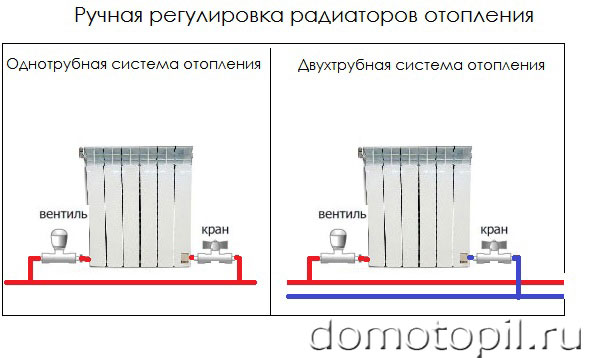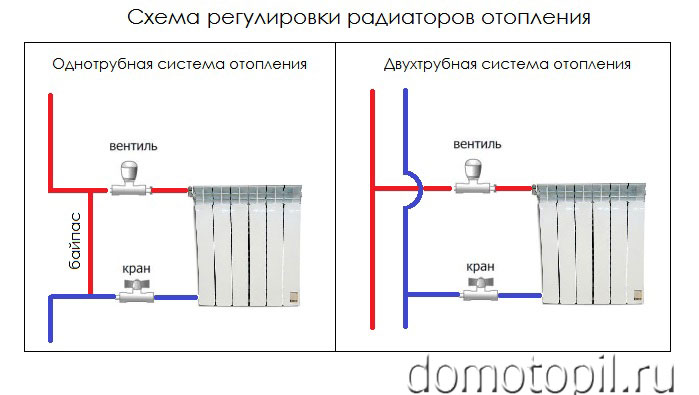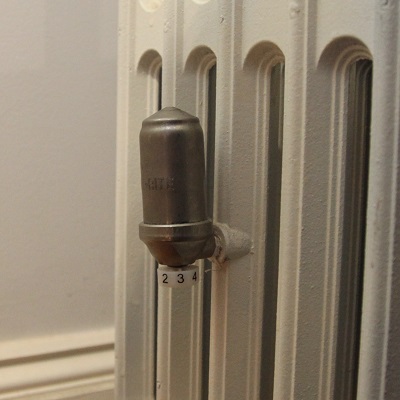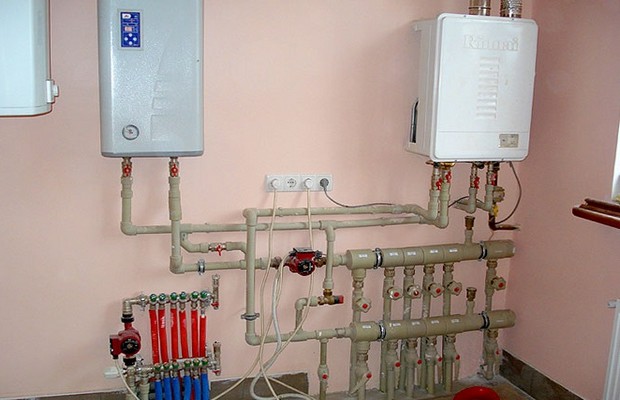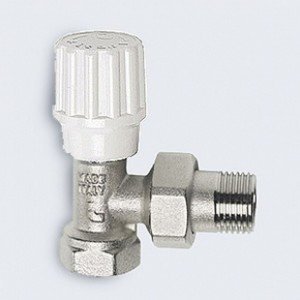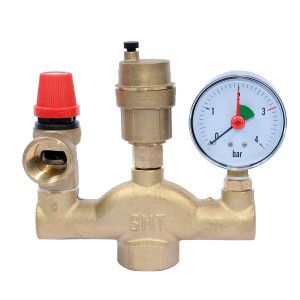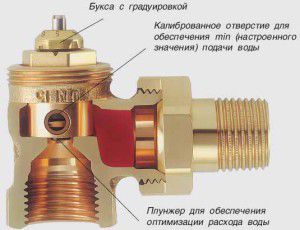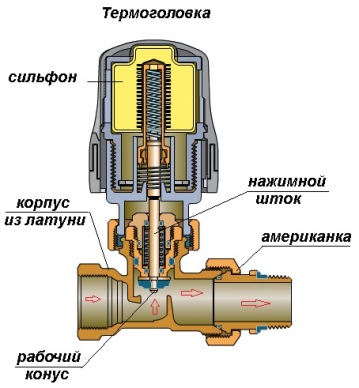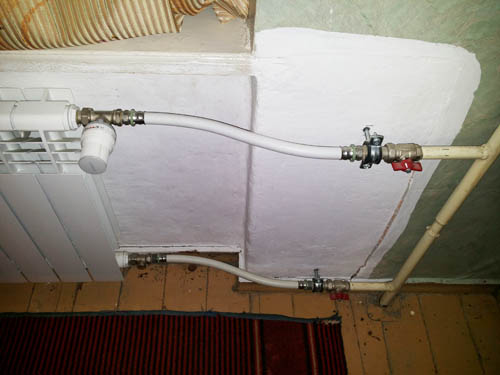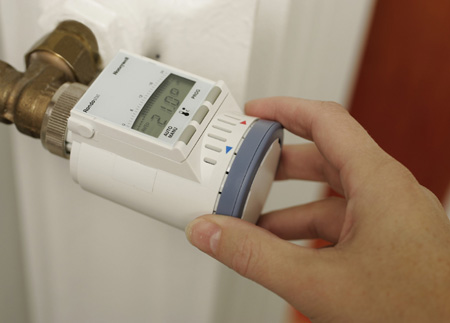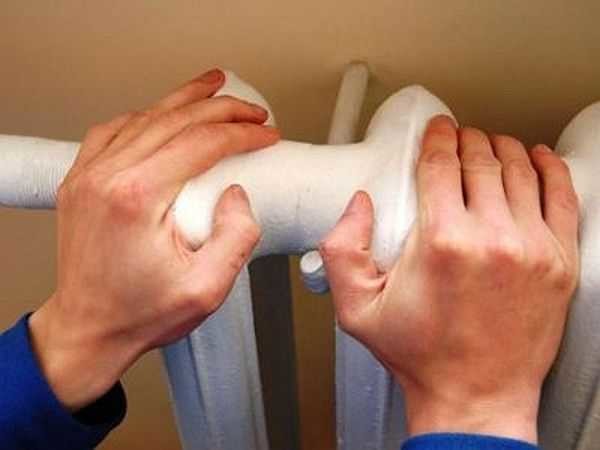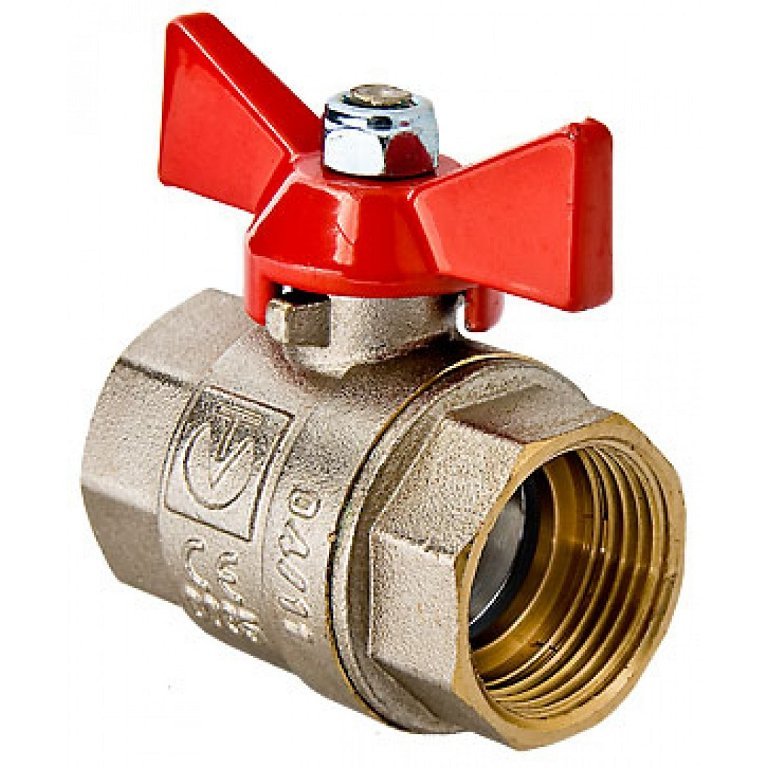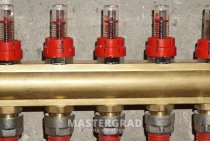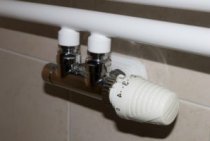How to properly regulate the temperature of the heating battery, manually or automatically
Adjusting the heating batteries in the apartment allows you to simultaneously solve several problems, among which the main one is to reduce the cost of paying for some utilities. This possibility is realized in different ways: mechanically and automatically. However, when changing the parameters of the heating system, the average room temperature does not increase. You can only reduce it to the desired level by adjusting the position of the reinforcement. It is advisable to install such devices on batteries in houses where it is cool in winter.
Why do you need to adjust
The main factors explaining the need to change the heating level of batteries using locking mechanisms, electronics:
- Free movement of hot water through pipes and inside radiators. Air pockets can form in the heating system. For this reason, the coolant stops heating the batteries, since it gradually cools down. As a result, the microclimate in the room becomes less comfortable, and over time the room cools down. To keep the pipes warm, locking mechanisms mounted on radiators are used.
- Adjusting the temperature of the batteries makes it possible to reduce the cost of heating your home. If the rooms are too hot, by changing the position of the valves on the radiators, you can reduce costs by 25%. Moreover, a decrease in the heating temperature of the batteries by 1 ° C provides a saving of 6%.
- In the case when the radiators strongly heat the air in the apartment, you often have to open the windows. In winter, it is not advisable to do this, because you can catch a cold. In order not to have to constantly open windows in order to normalize the microclimate in the room, regulators should be installed on the batteries.
- It becomes possible to change the heating temperature of the radiators at your own discretion, and individual parameters are set in each room.
Adjustment of heating devices depending on the type of heating system
Before adjusting the heating in the apartment, it is necessary to determine the type of heating system used.
Individual heating
In this case, the procedure is much simpler, since in most cases the systems are powered by a powerful heating boiler, in addition, a circulation pump is installed in it, and each heating device has a three-way valve.
The presence of valves on the radiators allows rational use of heat by reducing the water supply to the radiator or completely disconnecting it from the system.
Central heating
In the central heating system, the question of how to adjust the heating battery in the apartment is decided depending on the piping:
- With a two-pipe wiring scheme, two risers are installed, which provide the coolant supply to the heating devices and its return return. The flow of hot water in the radiator is regulated by a separate valve and a manual or automatic thermostat, which is equipped with each heating device.
- The principle of operation of a single-pipe system is to supply coolant to each radiator and return it back to the main riser. Thanks to this scheme, the water temperature in the heating devices on any floor is almost the same. Each heating device has a control valve at the supply.
- In most multi-storey buildings, a heating system with a vertical coolant supply is installed, which completely eliminates the possibility of adjusting the temperature in the heating devices. With this scheme, the batteries of the lower floors heat up very poorly, so it is always cold in the apartments. The rooms of the upper floors, on the contrary, suffer from heat.
ball valve
This is the most famous type of valves. Inside it there is a smooth ball having a through hole and capable of turning 90 ° C, thus regulating the flow of water in the pipe, blocking or opening it. The design of the mechanism provides it with minimal resistance to flow in the open state. It is designed to operate in the "fully open" or "fully closed" position, to quickly shut off water or, in some cases, drain it. Intermediate positions are possible, but prohibited.
The material for these mechanisms will be nickel-plated brass and stainless steel; polymeric materials are also used for metal-plastic systems. There are expensive and high-quality cranes from the brands Danfoss, Giacomini, Bugatti on the market. For limited financial opportunities, Chinese and Turkish Valtec, Fado are offered. Good quality at a low price is offered by the Chinese AGUA-WORID.
The most common type of faucet is a valve. Allows you to adjust the pressure. The channel for the flow inside it is perpendicular to the flow of liquid in the supply pipes. Installation must be carried out with careful consideration of the markings so that the water flows in only one direction.
For heating systems there are valves with a conical valve. They are most effective for such conditions. Fully open, it passes the maximum amount of liquid, which makes the heat output of the battery more efficient. The mechanism allows you to reduce the flow of coolant and reduce heat transfer if the room is too warm and, thus, control the temperature.
There are such types:
- adjusting (straight and angular). They have manual control. Are applied in autonomous heating. They cannot accurately adjust the heat transfer due to the lack of a scale and a temperature sensor;
- equipped with a thermal head. Their design makes it possible to block or limit the increase in temperature by means of manual or automatic control. Installed on two- and one-pipe systems. Adjustment is simple - the required temperature is set manually using a restrictive ring;
- with thermostat. Installed in front of the battery. The flow of the coolant is controlled by a valve mounted in front of the thermostat.
There are no plastic valves, they are made of brass, steel, or a combination of these materials.
Heating temperature control
An important parameter of any heating system is the optimal temperature regime of its operation. The ratio of hot and cooled coolant 75/50 or 80/60 is considered suitable. However, this value is not always acceptable for certain sections of the network. How to properly adjust the heating in the house in this case? Requires the installation of special equipment. Some of them are designed to regulate heating radiators.
Mixing units
Their main element is a two or three-way valve. One of the pipes is connected to the heating pipe with hot water, the second to the return. The third is mounted on the section of the pipeline, where it is necessary to ensure a lower level of coolant temperature.
As additional mixing units, they are equipped with a temperature sensor and a thermostatic control unit. The sensor receives a signal about the level of heating of the coolant and it opens or closes the mixing valve, thereby regulating the two-pipe heating system. Most often, such mechanisms are installed in the collectors of a water-heated floor.
If you need to adjust the heating of a water-heated floor in an apartment building, you need to take into account the temperature regime of the pipes. Most often it does not exceed 45 degrees.
Servo drives
Servo for radiators
How to adjust the heating in an apartment building if it is not possible to independently change the temperature of the water in the pipes? This requires the installation of special shut-off valves.You can limit yourself to installing simple taps - with their help, the flow of coolant into the radiators is regulated. However, in this case, the adjustment will have to be carried out each time independently. The best option would be to install servos.
The design of this device includes a thermostat and a servo. To work, you must perform the following steps.
- Set the desired temperature on the thermostat.
- The servomotor will automatically open or close the coolant inflow to the radiator.
In addition to these models, you can purchase an economy option that includes only a thermostat. In this case, the adjustment level will not be as accurate. But how to adjust the heating system in an apartment building if old batteries are installed? There are models of thermostats that are designed for installation in cast iron radiators. Such a measure will make the temperature setting for the apartment more accurate.
Thermostats must not be used to regulate the differential pressure in the heating system. They will only limit the flow of coolant into the radiator, without affecting the temperature regime of the entire system.
Locking devices
Valves used for installation in a room heating system should be divided into two groups - shut-off and control. This division is largely arbitrary, since the shut-off valves also allow you to regulate the movement of the coolant. Naturally, in this case, the adjustment accuracy is quite low, but you can cut off the battery from the water source.
Scheme of a spherical structure
The simplest and most commonly used type of valves are ball valves:
The ball valve is designed to turn off the radiator. Its design allows the device to be set either in the open or in the closed position, so that the adjustment is carried out quite according to the principle of "there is heat - there is no heat."
Ball valves for heating radiators provide two-position adjustment
Note! In principle, it is possible to fix the valve in an intermediate position, but then the rate of its wear will increase many times due to the friction of particles suspended in water against the locking element. So it's best not to do this unless absolutely necessary.
- Blocking of the coolant flow is carried out due to the movement of a metal ball with a hole coaxial to the tube lumen. When the valve handle is turned, the rod comes into action, which rotates the sphere inside the body, aligning the hole in it with the lumen of the pipe.
- As a rule, faucet parts are made of steel, bronze or brass. Fluoroplastic gaskets are responsible for sealing the joints and the obturator, which, if necessary, can be replaced with your own hands.
- Connection to the radiator is carried out either with the help of a conventional nut, or with the help of an "American".
Ball design with an American
Unlike ball valves, cone valves make it possible to regulate the flow of coolant more smoothly. This is ensured by the features of their design:
Sectional device
- The locking element is a conical rod, on the surface of which a thread is applied.
- When we rotate the flywheel, the rod moves along the thread, moving in a vertical plane.
- In the lowest position, the lumen of the pipe is completely blocked. The tightness of the overlap is provided by elastic gaskets that are put on the annular grooves of the stem.
- Raising the shut-off part, we slightly open the gap, and the coolant begins to flow into the radiator.
Note! It is possible to regulate the microclimate in the room only approximately by reducing or increasing the amount of hot water in each battery
Model in polypropylene case
In practice, bronze or brass cone valves for heating radiators are most often used: only systems are equipped with polypropylene, some of the pipes in which are also made of plastic. This is due to the relatively low strength and wear resistance of polymers compared to sanitary alloys.
On the other hand, polypropylene taps for heating radiators are somewhat cheaper, therefore, in conditions of a budget deficit, they can be used.
Mayevsky crane
When the coolant is poured into the heating system, air enters along with water or antifreeze.
To remove it, special devices are used - the so-called Mayevsky cranes:
Air release device
- The design of such a product is quite simple: it is based on a shut-off rod installed in a housing with a thread for a radiator plug.
- The stem is driven either by a screwdriver or a special key, opening the pipe clearance in the saddle.
Note! If possible, buy valves for a screwdriver, since you will regularly lose the key, which is not surprising - you will have to use it once or twice a year. It must be borne in mind that the throughput of such a tap is small, so, for example, you should not put it on an expansion tank: it will take about an hour to bleed excess air
In such a situation, a conventional valve or a tap installed with a spout up is more suitable.
It must be borne in mind that the throughput of such a tap is small, so, for example, you should not put it on an expansion tank: it will take about an hour to bleed excess air. In such a situation, a conventional valve or a tap installed with a spout up is more suitable.
Photo of installed valve
Manual controls
Manual adjustment is carried out by means of a valve installed on the pipes supplying or discharging the coolant from the battery. The scheme, depending on the type of heating system (two-pipe or single-pipe), is slightly different:
Everything is simple here, it became hot - they closed the valve, it was cold - they opened it.
The radiator is additionally equipped with one more tap so that in the event of a leak on the radiator, it can be eliminated or the radiator replaced without shutting down the entire system.
How not to regulate the temperature of the radiator
Perhaps you need to focus your attention on one important thing. That it is necessary to install valves, not ball valves, to adjust radiators
Often, two ball valves are installed on radiators in case of emergency situations when this area requires urgent repairs. These taps make it possible to make repairs without draining the heating system or blocking the common riser of the house. Some regulate batteries with them. This is not worth doing.
Ball valves are shut-off valves, it has only two working positions, it is open or closed. It does not have any intermediate working positions. Yes, it will reduce the rate of passage of the coolant through the radiator by as much as you need it. But his days will be numbered. The fact is, when the position of this valve is between “open” and “closed”, the ball, covered with a protective layer, begins to collapse with small particles in the form of sand, scale, rust, located in the coolant. Especially in the central heating coolant. In places of the disturbed layer, lime deposits, rust, and so on begin to be deposited. 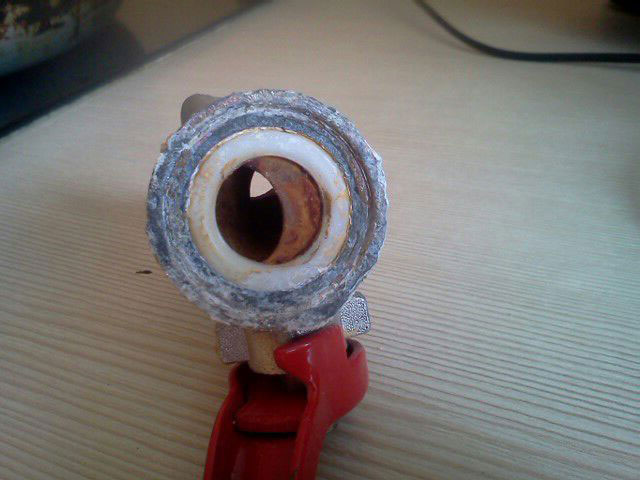
Which valves to use for adjustment
To regulate the temperature of the radiators, special radiator control valves are used. They are specially designed for use in heating systems, both individual and central. They are resistant to coolant containing solids and are also capable of high flow rates. They are available with both direct and angled connections.
These valves are reliable, durable, affordable, effectively cope with their intended purpose.The only disadvantage of manual regulators is periodic monitoring and adjustment. It is necessary to twist from time to time, then to a greater, then to a lesser extent, depending on the climate outside, the temperature of the coolant and the room.
Differences in heating systems
According to their location, there are three types of heating systems:
- systems through which water moves from top to bottom;
- one-pipe system;
- two-pipe system.
If your house has a system of the first type, then it will be simply impossible to adjust the temperature of the radiator. On the upper floors, the radiators will be constantly hot, but on the lower floors they will be colder.
If you have a single-pipe flow system, then to adjust the radiators, it will be enough to install an additional valve on the pipe that supplies hot water to a separate radiator. In a flow system, water moves through the riser, passes through the battery and returns to it again. (See also: What are good heating radiators to use for residential heating)
In the presence of a two-pipe system, both manual valves and special automated devices can be installed on the line. They help to regulate not only the temperature, but also the volume of incoming water. Which device to choose - manual or automatic - is up to you.
Why you need to regulate the heating batteries
Firstly, the temperature setting helps to create the most comfortable indoor conditions.
Secondly, this reduces the cost of heat consumption. If we calculate the efficiency of heating battery regulation systems, then on average costs are reduced by 25%.
Thirdly, in the presence of heat consumption meters, it is possible to control the cost of space heating.
Fourthly, there is no need for constantly open windows. Of course, fresh air is useful, but if there are small children or sick people in the room, a draft can only harm them.
Take care of adjusting the batteries in advance, before the start of a new heating season, and then in the cold season you will not have to freeze and try to frantically adjust the central heating system. However, this is not worth doing in the summer either - while it is hot outside, you will not be able to fully appreciate the comfort of artificially heated air and correctly set the required temperature.
The need to adjust the temperature before the start of the season. If the apartment or house is too cold for a comfortable stay, you will have to change the heating indicators. The problem usually concerns both apartment buildings with a centralized heating system, and private ones with an individual one.
The temperature can only be reduced compared to the initial value, as well as separate adjustment for different rooms. For example, if the bedroom is too warm, you need to lower the setting. Otherwise, sleep problems may occur. For this reason, it is required when carrying out design and calculations. If the system has already been installed, then you will need to make a modification.
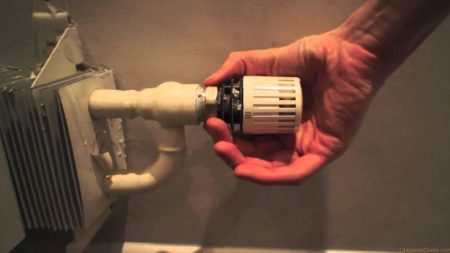
Temperature of radiators
Very often, residents of apartment buildings and country houses are wondering what temperature, according to the standard, the heaters themselves should be in the room and how to properly adjust the radiators. In fact, there is no such norm for the temperature of radiators. There is only such a thing as heat transfer. It completely depends on what material the radiator is made of. Aluminum radiators are considered the most effective for quickly warming up a room, bimetallic ones transmit heat a little worse, and cast iron ones are in last place. (See also: Steel Radiators)
Instead of standards for the temperature of heating units, there are standards for the level of heat in the air in the premises. According to these standards, in living rooms the temperature should not be lower than 18C and not higher than 24C.In other rooms (toilet, bathroom, kitchen, hallway, pantry) it should be from 14 to 22C. The ideal temperature is considered to be 21C. if you manage to achieve a uniform distribution of heat over the entire area of \u200b\u200bthe apartment or house, this will be the best option of all.
2 How to set up heating in a private house features and nuances
The heating networks of private houses and dwellings in apartment buildings differ greatly. In a separate residential building, only internal factors can affect the operation of heat supply - problems of autonomous heating, but not breakdowns in the general system. Most often, overlays occur due to the boiler, the operation of which is affected by its power and the type of fuel used.
Heating setting
The possibilities and methods of adjusting home heating depend on several factors, the most significant of which are the following:
- 1. Material and pipe diameter. The larger the cross section of the pipeline, the faster the heating and expansion of the coolant.
- 2. Features of radiators. It is possible to regulate radiators normally only if they are properly connected to the pipes. With proper installation during operation of the system, it will be possible to control the speed and volume of water passing through the device.
- 3. The presence of mixing units. Mixing units in two-pipe systems allow you to reduce the temperature of the coolant by mixing cold and hot water flows.
The installation of mechanisms that allow you to comfortably and sensitively regulate the pressure and temperature in the system must be provided for at the design stages of a new autonomous communication. If such equipment is installed without preliminary calculations in an already functioning system, its efficiency can be significantly reduced.
Sources
- https://microklimat.pro/otopitelnoe-oborudovanie/otopitelnye-pribory/regulirovka-temperatury-batarej-otopleniya.html
- http://domotopil.ru/vodyanoe-otoplenie/radiatory/regulirovka-temperatury-radiatorov-otopleniya.html
- https://ogon.guru/otoplenie/v-kvartire/regulirovka-batarey.html
- http://obustroen.ru/inghenernye-sistemy/otoplenie/batarei/kak-otregulirovat-batarei-otopleniya-v-chastnom-dome.html
- https://eurosantehnik.ru/sposoby-regulirovki-temperatury-radiatorov.html
- https://aqua-rmnt.com/otoplenie/radiatory/regulirovka-temperatury.html
- https://teplospec.com/radiatory-batarei/pravilnaya-regulirovka-batarey-otopleniya-v-kvartire-komfort-v-dome-i-ekonomiya-sredstv.html
- http://sovet-ingenera.com/otoplenie/radiator-obogrev/regulyatory-temperatury-dlya-batarej-otopleniya.html
- https://GidPoVode.ru/radiatory/regulirovka-batarej.html
- http://teplosten24.ru/regulirovka-otopleniya-v-kvartire.html
- http://teplosten24.ru/kak-regulirovat-teplo-v-batareyah.html
- http://remontonly.ru/regulirovka-batarej-otopleniya-v-kvartire.html
Manual valves
Valves with manual adjustment allow you to change the volume of coolant entering the radiator by increasing or decreasing the diameter of the through hole.
The composition of the valve includes a valve having a locking head. It, in turn, is connected to the handle, on which a scale with divisions can be applied. Turning the handle causes the locking head to move and change the volume of the incoming coolant to a smaller or larger side. Marks on the scale allow you to set the required temperature of the battery.
Manual valves are simple, reliable and inexpensive, but require regular monitoring.
Stabilization of pressure in the heating system
The expansion of water as a result of heating is a natural process. In this indicator, the pressure may exceed the critical value, which is unacceptable from the point of view of heating operation. In order to stabilize and reduce pressure on the internal surfaces of pipes and radiators, several heating elements must be installed. Adjusting the heating system in a private house with their help will be much easier and more efficient.
Expansion tank adjustment
Expansion membrane tank
It is a steel container divided into two chambers. One of them is filled with water from the system, and air is injected into the second. The pressure value in the air is equal to the normal value in the heating pipes. If this parameter is exceeded, the elastic membrane increases the volume of the water chamber, thereby compensating for the thermal expansion of water.
Before adjusting the differential pressure in the heating system, the condition and setting of the expansion vessel must be checked. You can adjust the pressure in the heating system by purchasing a tank model with the ability to change it in the air chamber. As an additional measure, a pressure gauge is installed to visually check this value.
However, with a significant jump in pressure, this measure will not be enough.So you can adjust the pressure drop in the heating system if it does not exceed a critical value. Therefore, it is recommended to install additional devices.
How to adjust a security group
Heating safety group
This group of devices includes the following elements:
- Pressure gauge. Designed for visual control of the heating system;
- Air vent. If the water temperature exceeds 100 degrees, the excess steam acts on the valve seat of the device, releasing air out of the pipes;
- Safety valve. It works in the same way as a water trap, but it is needed to drain excess coolant from pipes.
How to adjust the heating radiator using this unit? Alas, it is designed to prevent emergencies throughout the system. Batteries require a different device.
Mayevsky crane
Structurally, it is similar to a safety valve. A special feature is the small size and the ability to mount on a radiator pipe with a small diameter.
In order to properly adjust the heating batteries, you need to know in which cases the Mayevsky crane is used:
- Elimination of air locks in radiators. By opening the valve, air is released until the coolant flows;
- Setting the parameters of the critical pressure value. In the event of an emergency expansion of water, the valve opens and the pressure in the radiator stabilizes.
Mayevsky crane design
The last function is optional and most often not used. This task is best handled by the security team. Proper adjustment of heating in the house should include all of the above elements.
When self-regulating a two-pipe heating system with the boiler running, you need to constantly monitor the readings of thermometers and pressure gauges.
How to increase the output power of the radiator
It is possible to increase the output power of radiators only by increasing the temperature of the coolant. Or changing radiators to more efficient ones (changing old, clogged, cast-iron radiators for modern bimetallic, aluminum, steel, etc.). Replacing the radiator supply pipes with new ones, adding additional sections to the installed batteries and a number of other factors that affect this. Even the way the radiator is connected to the heating system will depend on its temperature.
Therefore, from the above, it becomes clear that, for example, if in your apartment with central heating, the radiators do not fully cope with their task, then it will not be possible for you to raise the temperature of the coolant, since you do not do this and cannot do it
Therefore, it is better to pay attention to the quality of the radiators themselves or, for example, to the insulation of windows and the entire apartment as a whole. Perhaps it would be more rational to invest money on new double-glazed windows
In a private house with individual heating, please regulate the temperature of the water in the heating system with a heating boiler, but again, the quality of home insulation is a fundamental factor in a warm house. Perhaps your heating system is normal and by adding a boiler, you will spend money on energy resources.
Control valves
Operating principle
The control valve on the heating radiator is a device that allows you to automatically control the movement of the coolant.
The design of such products is quite complicated, but they also work much more efficiently than valves for manual adjustment:
The bellows is responsible for the perception of the outside temperature - a container filled with liquid or gas. As the temperature rises, the bellows expands, affecting the adjusting assembly.
Note! The price of liquid and gas-filled devices is approximately the same, but the features of the work are different.So, gas models respond faster to temperature changes, and liquid models more accurately convey the effect on the coolant flow.
- The expanded bellows presses on the valve stem, which lowers and gradually closes the valve saddle, through which hot water enters the battery.
- During cooling, the opposite situation is observed: the stem rises, and the saddle lumen expands.
We set the degree of initial compression of the bellows ourselves, either by setting the desired temperature value on the digital display, or by rotating the mechanical adjustment knob. It is also possible to connect the thermal valve with external sensors - in this case, the movement of the stem is controlled not by a bellows, but by a servo drive under the action of an electrical or hydraulic system.
Installing a thermostatic valve
Among specialists, the question of whether it is necessary to put taps on heating radiators is practically not discussed. Even the installation of a simple ball valve provides a number of advantages, and the presence of a high-quality thermostat even more so. However, the instruction advises to follow a number of rules when installing such devices:
Example of correct product installation
- First, you need to choose the appropriate modification of the valve. For systems with one pipe, we use products of the RTD-G type, for two-pipe systems - RTD-N.
- Secondly, before putting taps on heating radiators, we check the direction of movement of the coolant (indicated by an arrow on the body). If we confuse, then the device will work as you like, just not the way we need.
- Thirdly, we place the thermoregulatory head perpendicular to the plane of the battery. so that the heat flow does not affect its operation.
How to regulate heating radiators with taps is also a fairly simple question:
- Having installed the valve on the radiator, we check the tightness and supply the coolant to the system.
- Using the handle or dial, set the average temperature.
- After about an hour, we adjust the valve setting according to our feelings and referring to the thermometer in the room.
- If necessary, repeat the adjustment again. however, this is usually not required.
The system is adjusted by turning the handle
After that, it is usually necessary to intervene in the operation of the device no more than once a month - with sudden changes in external temperature.
How to increase the heat dissipation of batteries
Whether it is possible to increase the heat transfer of the radiator depends on how it was calculated, and whether there is a power reserve. If the radiator simply cannot produce more heat, then any means of adjustment will not help here. But you can try to change the situation in one of the following ways:
- First of all, check for clogged filters and pipes. Blockages are not only found in old houses. They are more often observed in new ones: during installation, various kinds of construction debris enter the system, which, when the system starts up, clogs the devices. If the cleaning did not give results, we proceed to drastic measures.
- Increase the coolant temperature. This is possible in individual heating, but it is very difficult, rather impossible, with centralized heating.
- Change connection. Not all types of radiator connections are equally effective, for example, a reverse side connection gives a power reduction of 20-25%, and the installation location of the heater also affects. Read more about battery connection types here.
- Increase the number of sections. If the connection and installation are optimal, and the room is still not warm enough, it means that the heat output of the heater is not enough. Then you need to grow a few sections. How to do it, read here.
Adjusting the temperature of the radiator does not raise
The main disadvantage of regulated systems is that they require a certain power reserve for all devices. And these are additional funds: each section costs money. But it's not a pity to pay for comfort.If your room is hot, life is not a joy, just like in a cold one. And control valves are a universal way out.
There are many devices that can change the amount of coolant flowing through the heater (radiator, register). There are very inexpensive options, there are those that have a decent cost. Available with manual adjustment, automatic or electronic. Let's start with the cheapest.
Stopcocks
The simplest device that can change the temperature of radiators is a shut-off valve. He can, at the most primitive level, control the supply of hot water from the heating system of the house. Shut-off valves have the form of a ball valve, which has only two positions:
- "closed" - the movement of hot liquid is stopped, the battery is cooling down;
- "open" - the maximum volume of coolant passes through the radiator.
A significant disadvantage of adjusting the heating of the battery with a stopcock is the need for constant manipulation. It is impossible to create a constant temperature regime with a tap.
Important! The ball valve must not be left in an intermediate position, as the shut-off ball is damaged by solid particles in the heating water
